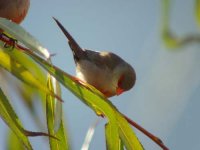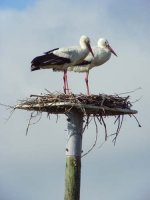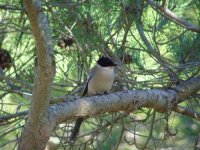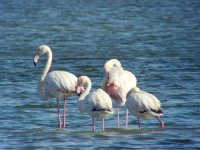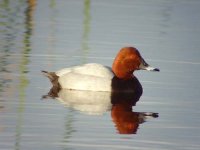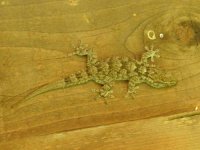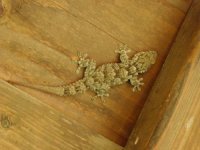Andrew
wibble wibble
17th December
Left Bristol early in the morning with a harsh freezing wind hammering across the face as I climbed the steps to the Easyjet plane. Just three hours or so later, I was down to my tee shirt and basking in the glow and warmth whilst scanning birds on the Ria Formosa at Ludo Farm. That's the stuff!
Birds of note seen in a short scan from the car were a Whimbrel, a Common Sandpiper, the only Curlew Sandpiper of the trip, a flock of Azure-winged Magpies and a couple of fly over Serins.
A large flock of Waxbills was obvious right away upon arrival at Bayside Salgados and were to be seen throughout the stay. Chiffchaffs were all over the place and are common wintering birds in the Algarve with many being very confiding. Fan-tailed Warblers were also easily seen in a ditch running alongside the road by the complex.
Incidentally, the car was a Peugeot 107 booked through Holiday Autos and collected without any delay from Sixt at the airport.
18th December
The sunny weather gave way to cloudy, dull, windy and cooler conditions but still a lot warmer than back home.
A scan of Alvor Marsh and a walk around the scrub to the east of it produced Fan-tailed Warblers, Sardinian Warblers, Cattle Egrets, a Marsh Harrier, a ringtail Hen Harrier, Corn Buntings, White Storks and a Blackcap.
Moving round to Alvor Estuary was practically a waste of time as the wind was so strong off the sea that birding was very uncomfortable with heavy rain thrown in for good measure. It was not a total loss as Crested Larks, Black Redstarts, Avocets, forty four Flamingos, Yellow-legged Gulls, two Spoonbills, six Black-winged Stilts, Golden Plovers and a few Kentish Plovers did make their way to the notebook.
The forecast was not good for the rest of the week.
20th December
No birding yesterday due to awful weather, just mind numbingly boring shopping and painfully watching Liverpool lose to Chavski in the League Cup.
Still terrible today. Nipped out to Pera Marsh in the morning but the weather was too much, a second attempt in the afternoon produced a few pleasant birds. The lagoon was full to the brim with water.
A couple of Caspian Terns were great to see including one patrolling near the eastern beach car park. The margins of the lagoon held several Snipe but more importantly, a Bluethroat and a Water Pipit. Quite a few hirundines were wheeling over the lagoon including a couple of nice Crag Martins. A minimum of six Purple Gallinules were at their favoured spot on the southern side to the east of the hide but quite skittish as always so no picture. The dunes had an elusive large flock of Meadow Pipits that may well have held a decent bird or two. Crested larks were also easy to see in the dunes but no Stone Curlew this time. Other notables were Black-winged Stilts, Spoonbills and Kentish Plovers.
24th December
The warm sunshine is back!
The impatient visit to Pera Marsh in bad weather on the 20th left me with a nasty cold and reluctant to venture out until today. The lure of the delights of Quinta do Lago near Vilamoura was too hard to resist today. It was a astute move as quality birding was enjoyed.
A small flood pool by the large lagoon west of the car park offered photo opportunities. A Black-winged Stilt was particularly obliging here. The main lagoon here held little more than hundreds of Coots as usual.
Walking east of the car park after lunch produced the goods. Hoopoes, Sardinian Warblers, Fan-tailed Warblers, babazillions of Chiffchaffs, a Serin, Azure-winged Magpie flocks, a Caspian Tern, confiding Turnstones, Red-crested Pochards, White Storks and a few Purple Gallinules of which one posed nicely about twenty yards away with the sun on it.
25th December
Carvoeiro Lighthouse in the morning was a bit of a let down with nothing spectacular seen. I can see the potential of the place during migration though. Plenty of pukka looking Rock Doves around the place.
A look along the Odeluca Valley was also depressing for me. It just didn’t do it for me at all but I can see it being productive for raptors.
Cutting losses and returning to Salgados to visit Pera Marsh was good as seeing a few decent birds perked me up. One shocker was the complete lack of water. The beach had been bulldozed away where the water goes out and all of the lagoon drained away to please some big wigs who own the adjacent golf course or something along those lines. Madness.
A Caspian Tern, two White Storks, three Spoonbills, a Marsh Harrier, quadrillions of Golden Plovers, a Water Pipit, some Black-winged Stilts and Kentish Plovers all offered eye candy before a scour of the dunes produced just Skylarks, a Kestrel and a Hare. A Hoopoe was also noted on the track back to the main road.
26th December
The Ria Formosa National Park at Olhao was the venue for the day and offered some good birding as well as various habitat and points of interest such as a watermill powered by the tide, a precursor to tidal power schemes I thought. The whole trail took about three hours at a steady birder’s pace where you are stopping to check out everything that moves. Entrance was €1.50 per person with plenty of interesting information leaflets also on sale.
Coming out of the visitor centre in the reserve, I was amazed to see a juvenile Griffon Vulture no more than thirty or so yards overhead. I was to see it again a further three or four times around the reserve before it flew out either to sea or the barrier islands.
Birds worth reciting from my trusty notebook were Azure-winged Magpies, Sardinian Warblers, Mediterranean Gulls, Flamingos, a Purple Gallinule and Crested Larks. There was a distinct lack of waders as the pools were full. I suspect that I may have flushed a Richard’s Pipit but this was probably due to having them on my mind after john-henry had seen a few in November.
Driving through Faro to get to Ludo Farm near the airport was a lot easier than I anticipated and highly worthwhile. With the sun to my back, I spent an hour or so attempting to digiscope four Caspian Terns in flight and got one ‘keeper’ I can use to produce a sketch from. All good fun.
A scan of the small hills in the distance was good for seeing three Booted Eagles including a super pale phase bird. All thanks to John-henry’s advice. Scan the smaller hills with trees to the north with white villas in them and not the bigger mountains in the distance.
Other birds seen without walking too far were a Marsh Harrier, three Little Stints and two Hoopoes.
Liverpool beat Derby today too so things were looking up!
An evening of excess followed with a plate of fresh Carvalhos (large King Prawns), Sagres Bohemia 1835 beer and some glasses of velvety Velhotes Special Reserve Port!
27th December
A three hour walk around Parc Ambiental did not produce anything spectacular but was enjoyable for the birds that were on offer and the amount of exercise.
Top bird was a distant raptor that I got my scope on in time to see as a dark phase Booted Eagle just before it dropped into a steep, direct and fast plummeting dive that slackened my jaw in amazement. It had disappeared into the garden of some villa, hopefully after a cat!
Large flocks of Crested Larks were in the ploughed fields. Two Marsh Harriers commuted between the golf course and the small lagoon which was full of Little Grebes. A Serin was with Linnets drinking from puddles in the track. A few Fan-tailed Warblers as well as loads of Blackcaps were also present.
Three or four shy Gecko species were on a wooden information panel. Hopefully, I shall be able to assign them to their proper name.
A scan of nearby Falesia Lagoon offered three Marsh Harriers (possibly from Parc Ambiental) but none of the hoped for Penduline Tits I saw last winter.
Just before watching the sunset from Gale, a bird passed over quickly, looking very much like a swift species.
28th December
A long drive to Cabo de Sao Vicente at the south western tip of mainland Europe in hope of seeing Thekla Lark and Alpine Accentor. Saw the former but no sign of any of the latter.
About six Thekla Larks were foraging east of the lighthouse car park as last winter. Two Blue Rock Thrushes were also seen but not close enough for a good squint or photo. Black Redstarts, Sardinian Warblers and loads of Dartford Warblers were all over the place. A male Ring Ouzel was a pleasantly unexpected surprise. Some Spotless Starlings were lined up on the telegraph wires.
The highlight was disturbing a long black snake of about a metre long. A bit spooky but at the same time exciting.
Here, the cliffs are at least a hundred metres high and plenty of anglers were stood on the edge fearlessly peering over as they cast their lines all the way down. It was too much to even stand five yards from the edge with my vertigo. They were doing alright, regularly bringing up small fish that looked like 'Douradas' or something like that. Take a rod if you want a free fish supper!
A look around a farm at the end of a track running north of the main Sagres/Lighthouse road was not as good as last year, just a few Corn Buntings.
For the second time running, I came away without seeing a Chough at all whereas everyone else seems to.
The scenery here is a splendidly unspoilt one untainted by the mass sprawl of tourism of which I acknowledge that I play a part in. As soon as you pass through Lagos it all changes to a becalming habitat with a few farm buildings and ruins dotted here and there.
A stop at Alvor Marsh to watch for raptors was good for the ringtail Hen Harrier, a few Kestrels and the Marsh Harrier climbing up to mob a passing Osprey. All this just before a divine sunset.
29th December
Back to Quinta do Lago for the morning.
Walking to the east was fortunate as I came across two confiding Hoopoes for some nice photographs.
A flock of Waxbills passed over. A few Crested Larks, some flocks of Azure-winged Magpies, a couple of Kingfishers and loads of Sardinian Warblers indulged me. A Common Sandpiper was unusually feeding on a concrete tennis court with the enormous Ria Formosa estuary on offer no more than fifty yards away, bizarre.
A Fan-tailed Warbler worked it’s way like a mouse through the scrub at our feet. No binoculars needed and it was a laugh failing to get a photo despite holding my camera up to it.
No chance of going east of the car park as we had to return to Salgados but did have time to visit Pera Marsh again. Three Caspian Terns, fifty one Little Grebes, about twenty Black-winged Stilts, two Common Sandpipers and some Avocets all fed in the pitiful amount of water left at the mouth of the lagoon. Elsewhere on the mud and small puddles were Kentish Plovers, four Purple Gallinules, a Bluethroat, some Snipe, a Green Sandpiper and six Spoonbills.
That rounded the trip off as the next and final day was spent sourcing souvenirs and bottles of decent Port to take back home but a brief walk around the farm land north of Pera Marsh near Alcantrilha did reveal two Little Owls.
The Algarve delivered the goods. If I had not come down with a cold, I would have made two long trips to Castro Marim and Castro Verde hoping to see some Bustards and Calandra Larks. Next time.
Sources of info.......
A Birdwatcher’s Guide to Portugal and Madeira by Moore, Elias & Costa
ISBN : 1871104076
(Limited to about three or four sites for the Algarve but very useful and doubles up if you ever go to Madeira.)
Summer Birding on the Central Algarve by John Hardacre
ISBN : 0-9552302-0-9
(Although it is a summer based book, it is useful for the maps and site descriptions. I'd rather the maps were more 'map-like' and less diagrammatic.)
Detail Map Algarve (Southern Portugal) 1;200000
ISBN-10: 3-8297-6235-6
(A good map but very large and unweildy to use in a car. You will manage okay with the smaller maps they give away free with your hire car anyway.)
Various trip reports on the internet and some excellent advice from BF’s very own john-henry of whom I am indebted to.
Left Bristol early in the morning with a harsh freezing wind hammering across the face as I climbed the steps to the Easyjet plane. Just three hours or so later, I was down to my tee shirt and basking in the glow and warmth whilst scanning birds on the Ria Formosa at Ludo Farm. That's the stuff!
Birds of note seen in a short scan from the car were a Whimbrel, a Common Sandpiper, the only Curlew Sandpiper of the trip, a flock of Azure-winged Magpies and a couple of fly over Serins.
A large flock of Waxbills was obvious right away upon arrival at Bayside Salgados and were to be seen throughout the stay. Chiffchaffs were all over the place and are common wintering birds in the Algarve with many being very confiding. Fan-tailed Warblers were also easily seen in a ditch running alongside the road by the complex.
Incidentally, the car was a Peugeot 107 booked through Holiday Autos and collected without any delay from Sixt at the airport.
18th December
The sunny weather gave way to cloudy, dull, windy and cooler conditions but still a lot warmer than back home.
A scan of Alvor Marsh and a walk around the scrub to the east of it produced Fan-tailed Warblers, Sardinian Warblers, Cattle Egrets, a Marsh Harrier, a ringtail Hen Harrier, Corn Buntings, White Storks and a Blackcap.
Moving round to Alvor Estuary was practically a waste of time as the wind was so strong off the sea that birding was very uncomfortable with heavy rain thrown in for good measure. It was not a total loss as Crested Larks, Black Redstarts, Avocets, forty four Flamingos, Yellow-legged Gulls, two Spoonbills, six Black-winged Stilts, Golden Plovers and a few Kentish Plovers did make their way to the notebook.
The forecast was not good for the rest of the week.
20th December
No birding yesterday due to awful weather, just mind numbingly boring shopping and painfully watching Liverpool lose to Chavski in the League Cup.
Still terrible today. Nipped out to Pera Marsh in the morning but the weather was too much, a second attempt in the afternoon produced a few pleasant birds. The lagoon was full to the brim with water.
A couple of Caspian Terns were great to see including one patrolling near the eastern beach car park. The margins of the lagoon held several Snipe but more importantly, a Bluethroat and a Water Pipit. Quite a few hirundines were wheeling over the lagoon including a couple of nice Crag Martins. A minimum of six Purple Gallinules were at their favoured spot on the southern side to the east of the hide but quite skittish as always so no picture. The dunes had an elusive large flock of Meadow Pipits that may well have held a decent bird or two. Crested larks were also easy to see in the dunes but no Stone Curlew this time. Other notables were Black-winged Stilts, Spoonbills and Kentish Plovers.
24th December
The warm sunshine is back!
The impatient visit to Pera Marsh in bad weather on the 20th left me with a nasty cold and reluctant to venture out until today. The lure of the delights of Quinta do Lago near Vilamoura was too hard to resist today. It was a astute move as quality birding was enjoyed.
A small flood pool by the large lagoon west of the car park offered photo opportunities. A Black-winged Stilt was particularly obliging here. The main lagoon here held little more than hundreds of Coots as usual.
Walking east of the car park after lunch produced the goods. Hoopoes, Sardinian Warblers, Fan-tailed Warblers, babazillions of Chiffchaffs, a Serin, Azure-winged Magpie flocks, a Caspian Tern, confiding Turnstones, Red-crested Pochards, White Storks and a few Purple Gallinules of which one posed nicely about twenty yards away with the sun on it.
25th December
Carvoeiro Lighthouse in the morning was a bit of a let down with nothing spectacular seen. I can see the potential of the place during migration though. Plenty of pukka looking Rock Doves around the place.
A look along the Odeluca Valley was also depressing for me. It just didn’t do it for me at all but I can see it being productive for raptors.
Cutting losses and returning to Salgados to visit Pera Marsh was good as seeing a few decent birds perked me up. One shocker was the complete lack of water. The beach had been bulldozed away where the water goes out and all of the lagoon drained away to please some big wigs who own the adjacent golf course or something along those lines. Madness.
A Caspian Tern, two White Storks, three Spoonbills, a Marsh Harrier, quadrillions of Golden Plovers, a Water Pipit, some Black-winged Stilts and Kentish Plovers all offered eye candy before a scour of the dunes produced just Skylarks, a Kestrel and a Hare. A Hoopoe was also noted on the track back to the main road.
26th December
The Ria Formosa National Park at Olhao was the venue for the day and offered some good birding as well as various habitat and points of interest such as a watermill powered by the tide, a precursor to tidal power schemes I thought. The whole trail took about three hours at a steady birder’s pace where you are stopping to check out everything that moves. Entrance was €1.50 per person with plenty of interesting information leaflets also on sale.
Coming out of the visitor centre in the reserve, I was amazed to see a juvenile Griffon Vulture no more than thirty or so yards overhead. I was to see it again a further three or four times around the reserve before it flew out either to sea or the barrier islands.
Birds worth reciting from my trusty notebook were Azure-winged Magpies, Sardinian Warblers, Mediterranean Gulls, Flamingos, a Purple Gallinule and Crested Larks. There was a distinct lack of waders as the pools were full. I suspect that I may have flushed a Richard’s Pipit but this was probably due to having them on my mind after john-henry had seen a few in November.
Driving through Faro to get to Ludo Farm near the airport was a lot easier than I anticipated and highly worthwhile. With the sun to my back, I spent an hour or so attempting to digiscope four Caspian Terns in flight and got one ‘keeper’ I can use to produce a sketch from. All good fun.
A scan of the small hills in the distance was good for seeing three Booted Eagles including a super pale phase bird. All thanks to John-henry’s advice. Scan the smaller hills with trees to the north with white villas in them and not the bigger mountains in the distance.
Other birds seen without walking too far were a Marsh Harrier, three Little Stints and two Hoopoes.
Liverpool beat Derby today too so things were looking up!
An evening of excess followed with a plate of fresh Carvalhos (large King Prawns), Sagres Bohemia 1835 beer and some glasses of velvety Velhotes Special Reserve Port!
27th December
A three hour walk around Parc Ambiental did not produce anything spectacular but was enjoyable for the birds that were on offer and the amount of exercise.
Top bird was a distant raptor that I got my scope on in time to see as a dark phase Booted Eagle just before it dropped into a steep, direct and fast plummeting dive that slackened my jaw in amazement. It had disappeared into the garden of some villa, hopefully after a cat!
Large flocks of Crested Larks were in the ploughed fields. Two Marsh Harriers commuted between the golf course and the small lagoon which was full of Little Grebes. A Serin was with Linnets drinking from puddles in the track. A few Fan-tailed Warblers as well as loads of Blackcaps were also present.
Three or four shy Gecko species were on a wooden information panel. Hopefully, I shall be able to assign them to their proper name.
A scan of nearby Falesia Lagoon offered three Marsh Harriers (possibly from Parc Ambiental) but none of the hoped for Penduline Tits I saw last winter.
Just before watching the sunset from Gale, a bird passed over quickly, looking very much like a swift species.
28th December
A long drive to Cabo de Sao Vicente at the south western tip of mainland Europe in hope of seeing Thekla Lark and Alpine Accentor. Saw the former but no sign of any of the latter.
About six Thekla Larks were foraging east of the lighthouse car park as last winter. Two Blue Rock Thrushes were also seen but not close enough for a good squint or photo. Black Redstarts, Sardinian Warblers and loads of Dartford Warblers were all over the place. A male Ring Ouzel was a pleasantly unexpected surprise. Some Spotless Starlings were lined up on the telegraph wires.
The highlight was disturbing a long black snake of about a metre long. A bit spooky but at the same time exciting.
Here, the cliffs are at least a hundred metres high and plenty of anglers were stood on the edge fearlessly peering over as they cast their lines all the way down. It was too much to even stand five yards from the edge with my vertigo. They were doing alright, regularly bringing up small fish that looked like 'Douradas' or something like that. Take a rod if you want a free fish supper!
A look around a farm at the end of a track running north of the main Sagres/Lighthouse road was not as good as last year, just a few Corn Buntings.
For the second time running, I came away without seeing a Chough at all whereas everyone else seems to.
The scenery here is a splendidly unspoilt one untainted by the mass sprawl of tourism of which I acknowledge that I play a part in. As soon as you pass through Lagos it all changes to a becalming habitat with a few farm buildings and ruins dotted here and there.
A stop at Alvor Marsh to watch for raptors was good for the ringtail Hen Harrier, a few Kestrels and the Marsh Harrier climbing up to mob a passing Osprey. All this just before a divine sunset.
29th December
Back to Quinta do Lago for the morning.
Walking to the east was fortunate as I came across two confiding Hoopoes for some nice photographs.
A flock of Waxbills passed over. A few Crested Larks, some flocks of Azure-winged Magpies, a couple of Kingfishers and loads of Sardinian Warblers indulged me. A Common Sandpiper was unusually feeding on a concrete tennis court with the enormous Ria Formosa estuary on offer no more than fifty yards away, bizarre.
A Fan-tailed Warbler worked it’s way like a mouse through the scrub at our feet. No binoculars needed and it was a laugh failing to get a photo despite holding my camera up to it.
No chance of going east of the car park as we had to return to Salgados but did have time to visit Pera Marsh again. Three Caspian Terns, fifty one Little Grebes, about twenty Black-winged Stilts, two Common Sandpipers and some Avocets all fed in the pitiful amount of water left at the mouth of the lagoon. Elsewhere on the mud and small puddles were Kentish Plovers, four Purple Gallinules, a Bluethroat, some Snipe, a Green Sandpiper and six Spoonbills.
That rounded the trip off as the next and final day was spent sourcing souvenirs and bottles of decent Port to take back home but a brief walk around the farm land north of Pera Marsh near Alcantrilha did reveal two Little Owls.
The Algarve delivered the goods. If I had not come down with a cold, I would have made two long trips to Castro Marim and Castro Verde hoping to see some Bustards and Calandra Larks. Next time.
Sources of info.......
A Birdwatcher’s Guide to Portugal and Madeira by Moore, Elias & Costa
ISBN : 1871104076
(Limited to about three or four sites for the Algarve but very useful and doubles up if you ever go to Madeira.)
Summer Birding on the Central Algarve by John Hardacre
ISBN : 0-9552302-0-9
(Although it is a summer based book, it is useful for the maps and site descriptions. I'd rather the maps were more 'map-like' and less diagrammatic.)
Detail Map Algarve (Southern Portugal) 1;200000
ISBN-10: 3-8297-6235-6
(A good map but very large and unweildy to use in a car. You will manage okay with the smaller maps they give away free with your hire car anyway.)
Various trip reports on the internet and some excellent advice from BF’s very own john-henry of whom I am indebted to.
Attachments
-
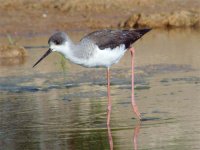 ALG023 - Black-winged Stilt (Quinta do Lago).JPG27.5 KB · Views: 125
ALG023 - Black-winged Stilt (Quinta do Lago).JPG27.5 KB · Views: 125 -
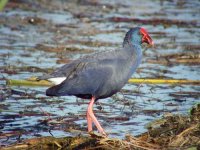 ALG029 - Purple Gallinule (Quinta do Lago).JPG50.9 KB · Views: 127
ALG029 - Purple Gallinule (Quinta do Lago).JPG50.9 KB · Views: 127 -
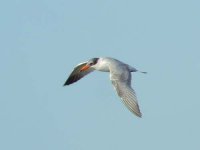 ALG055 - Caspian Tern (Ludo Farm).JPG13.3 KB · Views: 146
ALG055 - Caspian Tern (Ludo Farm).JPG13.3 KB · Views: 146 -
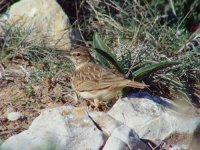 ALG064 - Thekla Lark (Cabo de Sao Vicente).JPG57.3 KB · Views: 128
ALG064 - Thekla Lark (Cabo de Sao Vicente).JPG57.3 KB · Views: 128 -
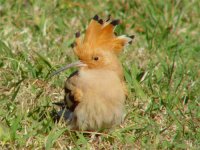 ALG082 - Hoopoe (Quinta do Lago).JPG44.1 KB · Views: 119
ALG082 - Hoopoe (Quinta do Lago).JPG44.1 KB · Views: 119
Last edited:




